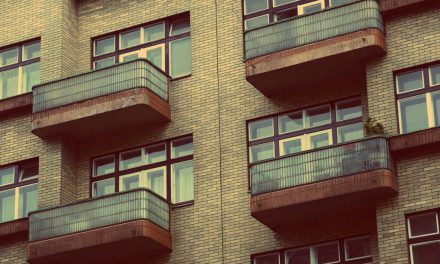Prefabricated construction has been around for decades — but 2022’s low-supply and high-cost construction environment is pushing a resurgence.
The pandemic-induced supply chain disruption continues to make it difficult for builders to keep up with demand, and they are increasingly turning to prefabs to cut costs and save time. But will it continue growing in popularity, even after the supply chain sorts itself out?
Prefabs do pave the way for a marginally faster construction process. The process consists of transporting fully constructed components to the site, and then assembling in a specific, step-by-step order. Items like stairs, walls, or even entire bathrooms are transported to the site: and then assembled.
All of the usual construction standards remain, but at a much faster pace.
In contrast, while all modular construction is considered prefab, not all prefabs are modular. Modular is more like building with Lego blocks. The parts are pieced together off-site and still transferred over to be assembled.
Modular construction can speed up construction by as much as 50% and cut costs by 20%, according to McKinsey & Company.
Prefabs create a more controlled environment to build, according to The New York Times. Some of the other highlights of prefabs include:
- making building cheaper (through bulk orders), essential as rising interest rates slash builder’s budgets;
- creating consistent hours for workers;
- streamlining production;
- reducing waste;
- reducing material exposure to the elements; and
- assembling skilled workers in a single environment, cutting down wait times for specialized workers like plumbers, electricians and heating, ventilation and air conditioning (HVAC) specialists who are high in demand.
However, there are some drawbacks to prefabs, including:
- higher transportation costs;
- architecture of buildings with less character;
- the inability to change construction plans or finishes partway through the project; and
- the inability for custom design choices.
Do the benefits outweigh the drawbacks? Well, it certainly cuts the timing for construction down. In today’s extremely low inventory environment, anything to give residential construction a boost will help.
California in need of harder, better, faster, stronger construction starts
To combat California’s ongoing housing shortage, it’s integral to create a pathway for more construction — the faster, the better.
In California, prefabs are considered factory-built housing (FBH) units. Construction for prefabs need to follow building standards published in the California Standards Code, according to the California Department of Housing and Community Development.
There are a plethora of laws and regulations, construction standards, and building accessibility rules to follow during the construction process for prefabs. The construction of FBHs need to also fall in line with the most current building code standards, according to the California Department of General Services.
With regulations in mind, construction starts are key for the extreme housing shortage in California. Inventory has increased slightly from the historic lows experienced in 2021, but we are still well below what is needed to match demand. Expect inventory to climb slightly heading into 2023, the result of rising interest rates and slowing sales volume, but there is a long road ahead to catch up to the level of housing necessary to meet demand.
Prefabs are a great way to cut the time to build, allowing for more construction starts — which leads us to another issue. Strict zoning regulations are still one of constructions’ top setbacks, and prefabs still need to follow the regulations set by the local government for the building site.
Zoning regulations make or break construction, and Senate Bill 10 (SB 10) recently survived a court challenge. SB 10 allows cities and local governments to rezone in areas with an abundance of transit, job-rich areas, or urban infill sites — vacant or unused parcels located within highly developed areas. SB 10 makes it much easier to not only spur construction starts, but to ensure more units are built per lot.
Thus, less restrictive zoning brings in the edge for more supply. And, prefabs bring a faster paced production time to the table — both work together to produce more supply.
Real estate professionals: do your clients shy away from prefab homes? Or are they even able to be selective in today’s competitive housing market? Share your experiences in the comments below!















Building a house is always difficult. Many customers do not have enough time to coordinate the process of design, installation and all finishing works.
It is much more convenient for the customer to get a result from one company. If you yourself are a builder and do not want to turn to prefabricated buildings, you should optimize all your work processes and adjust them so that you can ensure the result at all stages from the selection of materials to reporting documentation.